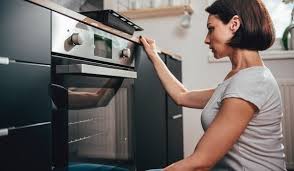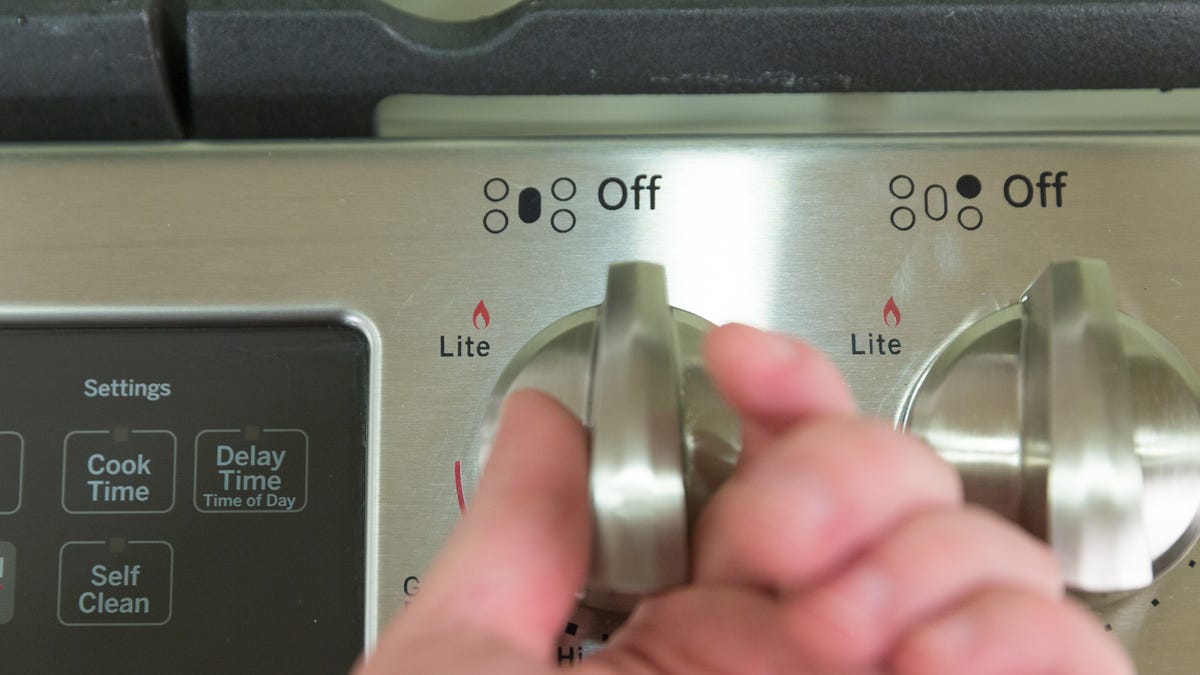Having a malfunctioning oven can be incredibly frustrating, especially when you’re in the middle of preparing a delicious meal. If you find yourself in a situation where your oven won’t turn on, there are several potential reasons behind this issue. In this article, we will explore common causes for oven failure, provide practical solutions to address the problem, and offer steps to ensure proper power supply. By following these guidelines, you’ll be well-equipped to troubleshoot and resolve the issue, getting your oven back up and running in no time.
Common Reasons for Oven Failure
When your oven fails to turn on, it’s essential to identify the underlying cause. Here are some common culprits that might be preventing your oven from functioning properly:
Check the Power Supply
To troubleshoot an oven that won’t turn on or stopped working, consider the following steps:
- Check power supply:
- Ensure the oven is properly plugged into the power outlet.
- Verify if the outlet is functional by testing with another device.
- Inspect the circuit breaker or fuse box for tripped breakers or blown fuses.
- Reset the breaker or replace the fuse if necessary.
- Verify GFCI outlets:
- Look for any Ground Fault Circuit Interrupter (GFCI) outlets near the oven.
- Press the “RESET” button if a GFCI outlet has tripped, as it may cause a power loss.
- Consider power fluctuations:
- If there was a recent power outage or surge, unplug the oven for a few minutes and plug it back in to reset the electronics.
- Use a surge protector or voltage regulator to protect sensitive appliances from power irregularities.
Inspect the Igniters and Electrodes
To troubleshoot a gas oven that isn’t turning on, inspect the igniters and electrodes:
- Locate the igniters and electrodes in the oven.
- Check for damage, corrosion, or blockage.
- Clean the components carefully.
- Test the oven to see if the igniters spark or electrodes generate an arc.
- If the problem persists, consider contacting a qualified technician for further assistance.
Examine the Heating Elements
To troubleshoot an electric oven that won’t turn on, follow these steps to examine the heating elements:
- Visually inspect the heating elements for damage, such as cracks or burn marks.
- Test the heating elements for continuity using a multimeter or continuity tester.
- Replace any faulty heating elements with new ones.
- Restore power to the oven and test if the heating elements work properly.
If the oven still doesn’t turn on or the heating elements don’t function correctly, seek assistance from a qualified technician.
Verify the Functionality of the Temperature Control Thermostat
To troubleshoot an oven that won’t turn on or has temperature issues, follow these steps to verify the functionality of the temperature control thermostat:
- Locate the thermostat and disconnect the power.
- Use a multimeter to measure the thermostat’s resistance.
- Compare the measured resistance with the expected value.
- If the resistance is significantly different or shows an open circuit, replace the thermostat.
- Install the new thermostat following the manufacturer’s instructions.
- Restore power and test the oven’s temperature control.
If the issue persists, seek assistance from a qualified technician or the oven’s manufacturer.
Assess the Thermal Fuse and Oven Control Board
To troubleshoot an oven that won’t turn on, assess the thermal fuse and oven control board:
- Check the thermal fuse:
- Locate the thermal fuse, typically found near the oven’s control board or on the back panel.
- Inspect the thermal fuse for any signs of damage, such as burn marks or a blown fuse.
- If the thermal fuse is visibly damaged or the fuse is blown, it will need to be replaced. Refer to the oven’s manual or consult a professional technician for the correct replacement procedure.
- Assess the oven control board:
- The oven control board regulates various oven functions, including turning it on.
- If you suspect a malfunctioning control board, it’s advisable to seek the assistance of a professional technician.
- The technician will assess the control board to determine if it needs to be repaired or replaced.
It’s important to note that both the thermal fuse and the control board involve electrical components, so caution should be exercised. If you are unsure or uncomfortable working with these components, it is recommended to contact a professional technician or the oven’s manufacturer for assistance.
Uncommon Causes and Additional Checks
If previous checks haven’t resolved the issue, consider these uncommon causes:
- Defective oven door switch: Inspect for damage or misalignment. Consult a technician if needed.
- Faulty wiring connections: Ensure connections are secure and undamaged. Seek professional assistance if unsure.
- Broken power cord: Check for damage like fraying or exposed wires. Replace with a qualified technician.
Solutions for Oven Failure
Once you’ve identified the cause of your oven failure, it’s time to take appropriate action to resolve the issue. Here are some solutions for common oven problems:
Replacing Damaged Heating Elements
If you have determined that one or more heating elements in your electric oven are damaged or burned out, the most effective solution is to replace them. Consult your oven’s manual or the manufacturer’s website for specific instructions on how to remove and replace the heating elements. Remember to disconnect the oven from the power source before attempting any repairs. Once the new heating elements are installed, test the oven to ensure it’s functioning properly.
Repairing Broken Igniters
To troubleshoot a gas oven that won’t turn on, you can repair broken igniters with these steps:
- Clean the igniters and electrodes:
- Thoroughly clean the igniters and electrodes using a soft brush or cloth to remove any dirt, grime, or food debris.
- Ensure that the electrode tips and igniter openings are free from any obstructions.
- Test the oven:
- After cleaning, attempt to turn on the oven and observe if the igniters spark consistently for gas ignition.
- If the igniters still fail to function properly, they may need to be replaced.
- Replace the igniters:
- Refer to your oven’s manual for instructions on replacing the igniters.
- If the manual is not available, contact the manufacturer or consult a professional technician for guidance.
- Obtain the correct replacement igniters compatible with your specific oven model.
Properly functioning igniters are crucial for the safe and efficient operation of your gas oven. If you’re unsure about repairing the igniters yourself, it is recommended to seek assistance from a qualified technician to ensure proper installation and safety.
Handling Faulty Thermal Fuses and Spark Electrodes
If you’ve determined that the thermal fuse has blown or the spark electrodes are defective, it’s crucial to address these issues promptly. Replace the blown thermal fuse with a new one of the same rating. Be sure to follow the manufacturer’s instructions for proper installation. In the case of faulty spark electrodes, consult your oven’s manual or contact the manufacturer for guidance on replacing these components. Taking care of these issues will help restore the functionality and safety of your oven.
Fixing Temperature Control Thermostat Issues
When the temperature control thermostat is malfunctioning, it can result in temperature inconsistencies or prevent the oven from turning on. If you’ve determined that the thermostat is defective, consult your oven’s manual or contact the manufacturer for instructions on replacing it. Take note of the thermostat’s model number and purchase the appropriate replacement part. Once installed, test the oven to ensure that the temperature control is working accurately.
Addressing Defective Oven Control and Relay Boards
If you suspect that the oven control board or relay board is the cause of your oven failure, it’s best to consult a professional technician. These components are complex and may require specialized knowledge to diagnose and repair. Contact an authorized service center or the manufacturer for assistance. A qualified technician will be able to assess the issue and either repair or replace the faulty boards as needed.
Steps to Ensure Proper Power Supply
Preventing future oven failures is just as important as resolving the current issue. By following these steps, you can help ensure a proper power supply to your oven:
Checking the Power Outlet and Circuit Breaker
Regularly inspect the power outlet that your oven is plugged into to ensure it’s secure and functioning correctly. Loose or damaged outlets may cause intermittent power supply issues. Additionally, periodically check the circuit breaker or fuse box to make sure the circuit supplying power to the oven hasn’t tripped or blown a fuse. If you notice any issues, contact a qualified electrician to resolve the problem promptly.
Testing the Bake and Broil Elements:max_bytes(150000):strip_icc()/why-your-oven-wont-heat-up-1152246-04-f9d6542626dc40c09510bae2cbec3e2b.jpg)
For electric ovens, it’s a good practice to test the bake and broil elements periodically. Turn on the oven to the desired temperature and observe whether both elements heat up properly. If you notice any irregularities, such as uneven heating or one of the elements not working at all, it’s advisable to have a professional technician inspect and replace the faulty elements.
Verifying the Igniter Functionality
If you have a gas oven, regularly check the igniters to ensure they are functioning properly. Turn on the oven and observe whether the igniters spark and ignite the gas. If you notice weak or no spark at all, it’s essential to clean or replace the igniters as necessary. Igniters play a critical role in the ignition process and should be in good working condition for safe and efficient operation.
Assessing the Spark Electrode for Defects
To troubleshoot a gas oven that won’t turn on, assess the spark electrodes:
- Locate the spark electrodes near the burner.
- Inspect them for damage or corrosion.
- Replace any faulty electrodes promptly.
- Test the oven to ensure proper spark ignition.
Exploring Less Common Causes
While less common, issues such as a defective oven door switch, faulty wiring connections, or a broken power cord can also lead to oven failure. Regularly inspect these components for any signs of damage or malfunction. If you suspect any of these components to be the cause of your oven issues, contact a professional technician to diagnose and resolve the problem.
When your oven won’t turn on, it’s essential to identify the root cause and take appropriate steps to resolve the issue. By checking the power supply, inspecting igniters and electrodes, examining heating elements, verifying the functionality of the temperature control thermostat, and assessing the thermal fuse and oven control board, you can troubleshoot common problems. Additionally, following the solutions provided, and ensuring proper power supply through steps such as checking the power outlet, testing the bake and broil elements, verifying the igniter functionality, assessing the spark electrode, and exploring less common causes, will help maintain the optimal performance of your oven. With these practical solutions and preventive measures, you’ll be able to enjoy hassle-free cooking and baking experiences in your home.